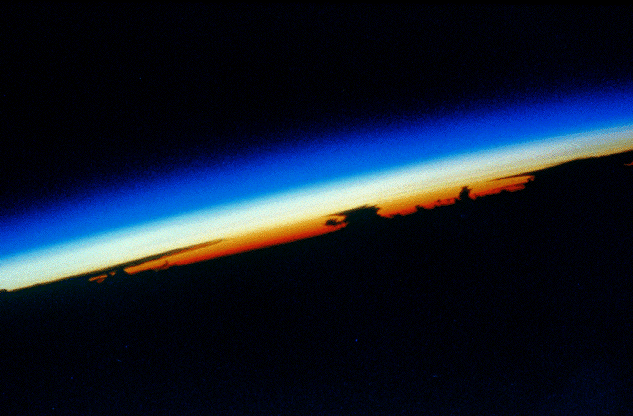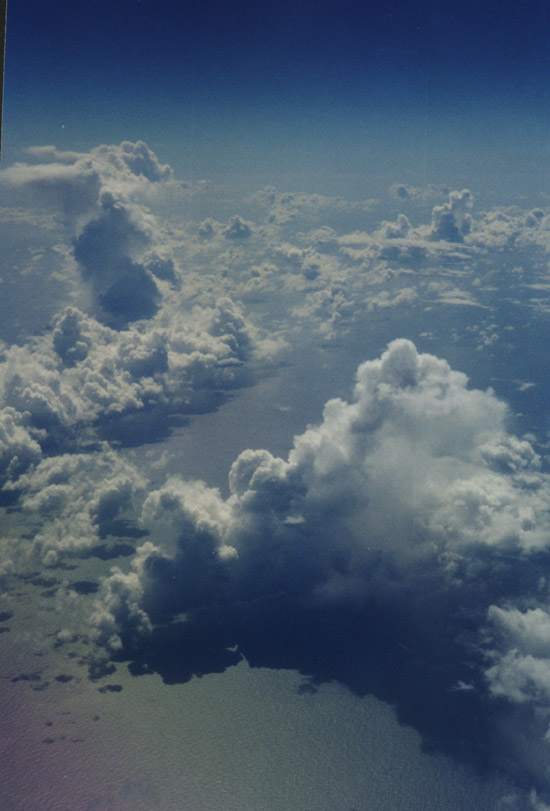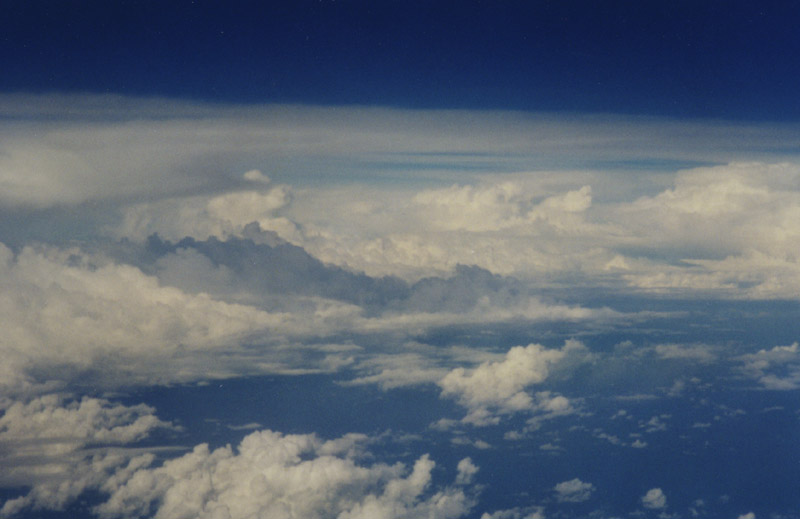 This shows thunderstorm clouds in cross-section. The new younger
cloud in the middle hasn't started to spread out yet, so doesn't
have the large thin glaciated anvil at the top. The tropopause is
the boundary between the red and white (in the tropics at about
15 km). The stratosphere is white because of the sulfate aerosol
layer from the eruption of Mt. Pinatubo. This layer cooled the
earth for several years after the eruption (1991 - 1993). The
reason the layer persists in the stratosphere for several years
is because clouds don't go into the stratosphere, so the little
aerosol particles don't get rained out. (Would come down within a
week as acid rain if near the surface.) Venus has sulfate aerosol
clouds all the time because there is no rain on Venus (too hot
and dry).
This shows thunderstorm clouds in cross-section. The new younger
cloud in the middle hasn't started to spread out yet, so doesn't
have the large thin glaciated anvil at the top. The tropopause is
the boundary between the red and white (in the tropics at about
15 km). The stratosphere is white because of the sulfate aerosol
layer from the eruption of Mt. Pinatubo. This layer cooled the
earth for several years after the eruption (1991 - 1993). The
reason the layer persists in the stratosphere for several years
is because clouds don't go into the stratosphere, so the little
aerosol particles don't get rained out. (Would come down within a
week as acid rain if near the surface.) Venus has sulfate aerosol
clouds all the time because there is no rain on Venus (too hot
and dry).

These two tropical images give the impression of what scientists
call "convective instability" - the continual overturning
(boiling) of the tropical atmosphere caused by surface solar
heating and cooling aloft by greenhouse gases. Convective
instability causes rain. A big question in climate science is how
much more rain there will be as we increase greenhouse gases and
increase cooling rates aloft (i.e. production of heavy air), and
what the net effect on soil moisture will be.





